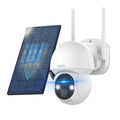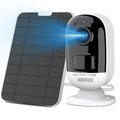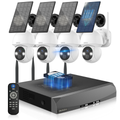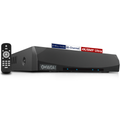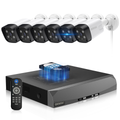Outdoor Surveillance Installation Guidelines and Standards
**Introduction:**
The proper installation of outdoor surveillance systems is crucial to ensure effective security coverage. Careful consideration of installation points and adherence to standards is essential for optimal functionality and longevity of the equipment. This article outlines key factors to consider when installing outdoor surveillance cameras, focusing on location selection, wiring requirements, waterproofing, and lightning grounding.
**Selection and Installation of Installation Points:**
- Choose suitable installation points that accommodate camera installation, usage, and maintenance.
- Install cameras away from high-voltage cables to avoid interference and electrical hazards.
- Utilize stable and sturdy mounting brackets for camera installation, ensuring they do not disrupt equipment operation or human activities.
- Avoid installation points that may be obstructed by road signs or tree branches.
- Prevent installations in low-lying areas susceptible to flooding to avoid damage to equipment.
- Install outdoor cameras with lightning protection devices and nearby grounding equipment.
**Wiring Requirements:**
- Maintain a minimum distance of 450mm between signal transmission lines and high-voltage equipment or cables.
- Do not bundle high-voltage and low-voltage cables together.
- Opt for under-eaves wiring for outdoor installations.
- In open areas, bury cables in sealed steel pipes with a grounding point, avoiding overhead wiring.
**Waterproofing Guidelines:**
- When using an L-shaped mounting pole, ensure the crossbar has a slight upward angle to prevent rainwater from flowing onto the camera.
- Implement proper waterproofing measures for cable connections to prevent image abnormalities due to corrosion.
- Wall-mounted cameras with lateral cable routing must have downward-facing cable outlets, and power adapters should be placed inside distribution boxes.
- When installing dome cameras, avoid transporting the camera by holding the output cable to prevent loosening of the waterproof seal, which may compromise waterproofing integrity.
- Avoid rotating and installing threaded mounts after connecting cables, as this could result in twisted wires and cable damage, causing signal issues.
**Lightning Grounding:**
- Ensure proper grounding for camera, mounting poles, front-end enclosures, and related equipment for reliable and sustained operation.
- If the camera is mounted on a cement column or wall, ensure a nearby grounding connection. For cameras on metal poles with good conductivity, direct grounding through the pole may be sufficient.
- In areas prone to intense lightning storms or with high voltage induction (such as near high-voltage substations), additional high-power lightning protection equipment and lightning rods should be installed.
**Conclusion:**
Properly installing outdoor surveillance systems requires meticulous planning and adherence to industry standards. OHWOAI provides a range of high-quality outdoor wireless security camera systems, ensuring comprehensive coverage for both residential and commercial settings. From **wireless security camera systems for outside** to **business surveillance camera solutions**, OHWOAI's offerings are designed to meet the highest standards of quality, performance, and security. By following these installation guidelines and leveraging OHWOAI's advanced equipment, a robust outdoor surveillance system can be established to safeguard properties and enhance security measures.
Sample Block Quote
Nam tempus turpis at metus scelerisque placerat nulla deumantos sollicitudin delos felis. Pellentesque diam dolor an elementum et lobortis at mollis ut risus. Curabitur semper sagittis mino de condimentum.
